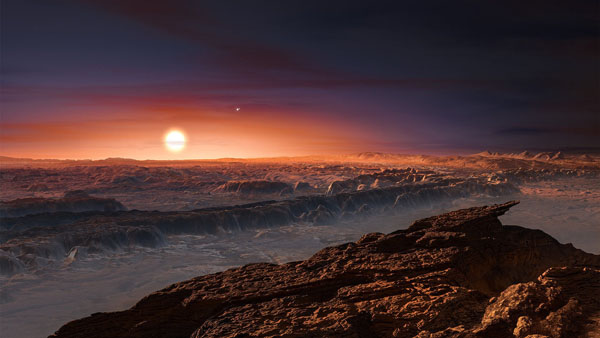Just a cosmic hop, skip and jump away, an Earth-size planet orbits the closest star to our sun, Proxima Centauri. Ever since the discovery of the exoplanet — known as Proxima Centauri b— in 2016, people have wondered whether it could be capable of sustaining life.
Now, using computer models similar to those used to study climate change on Earth, researchers have found that, under a wide range of conditions, Proxima Centauri b can sustain enormous areas of liquid water on its surface, potentially raising its prospects for harboring living organisms.
“The major message from our simulations is that there’s a decent chance that the planet would be habitable,” said Anthony Del Genio, a planetary scientist at the NASA Goddard Institute for Space Studies in New York City. Del Genio is also the lead author of a paper describing the new research, which was published Sept. 5 in the journal Astrobiology.
Proxima Centauri is a small, cool red-dwarf star located just 4.2 light-years from the sun. Despite its proximity, scientists still know very little about Proxima Centauri’s planetary companion, besides that its mass is at least 1.3 times that of Earth and that it goes around its parent starevery 11 days. Therefore, Del Genio and his colleagues had to make some reasonable guesses about the exoplanet Proxima Centauri b — namely, that it had an atmosphere and an ocean on its surface — for their work to proceed.
By Adam Mann – Full Story at Live Science



